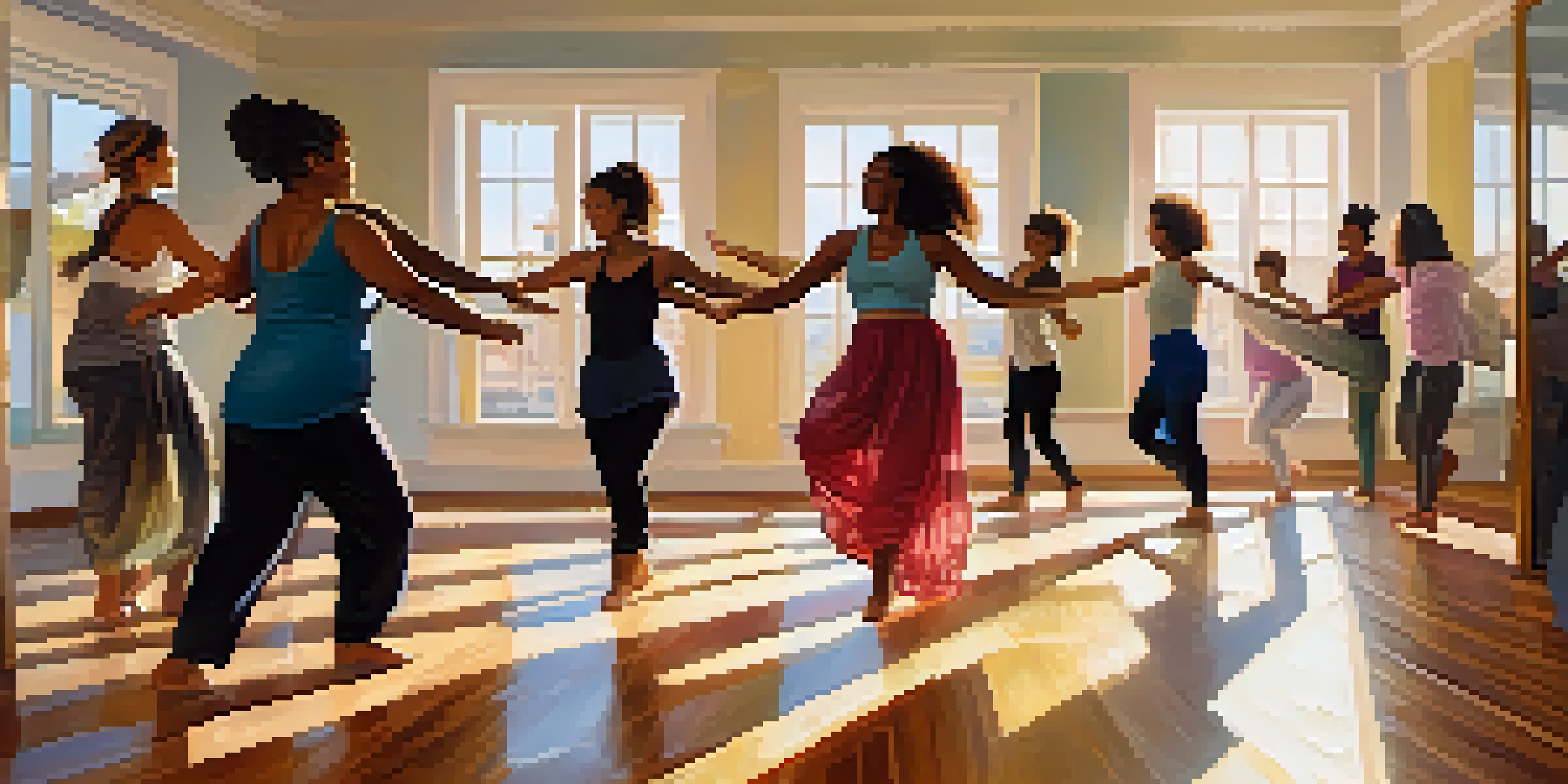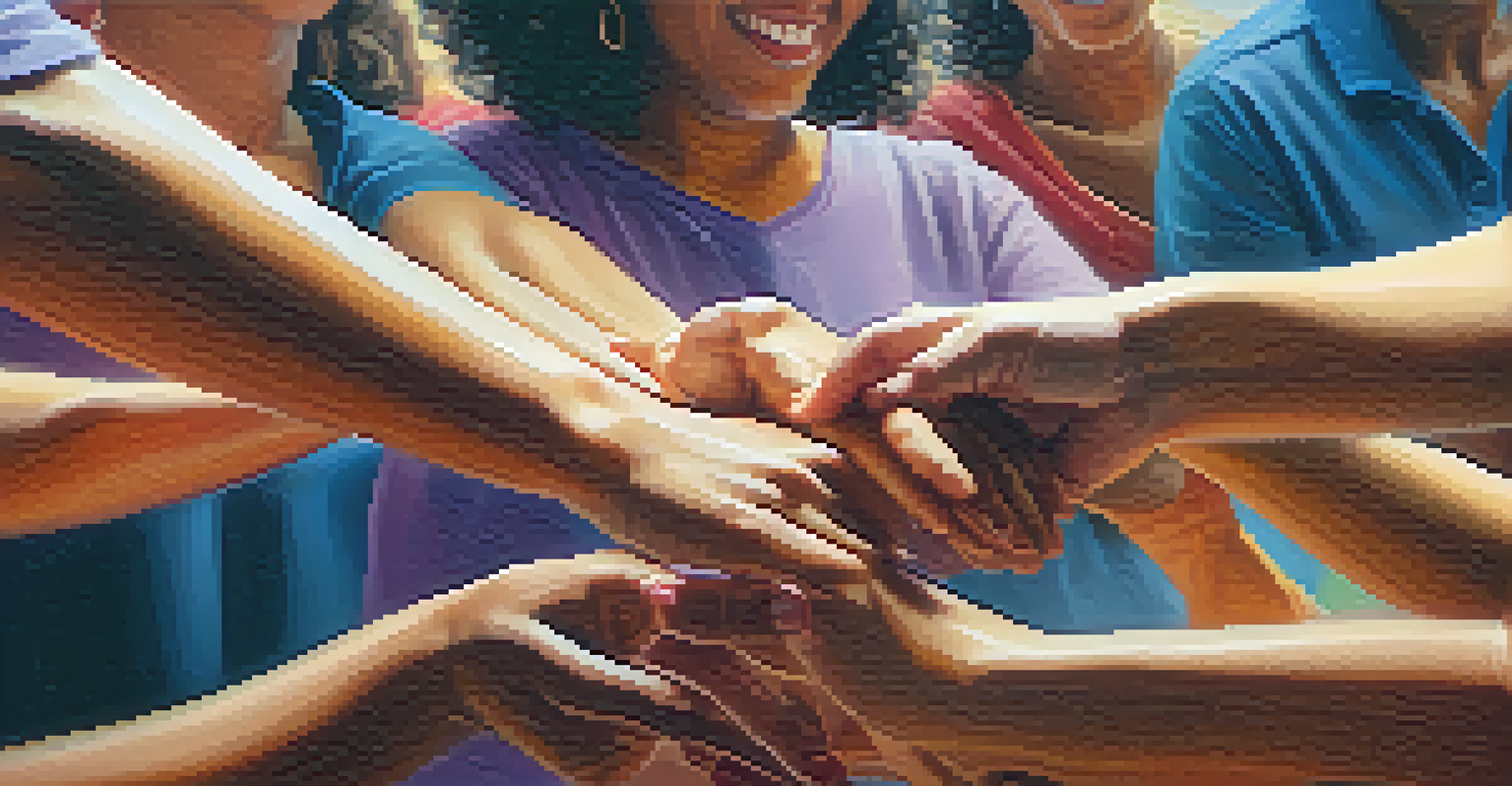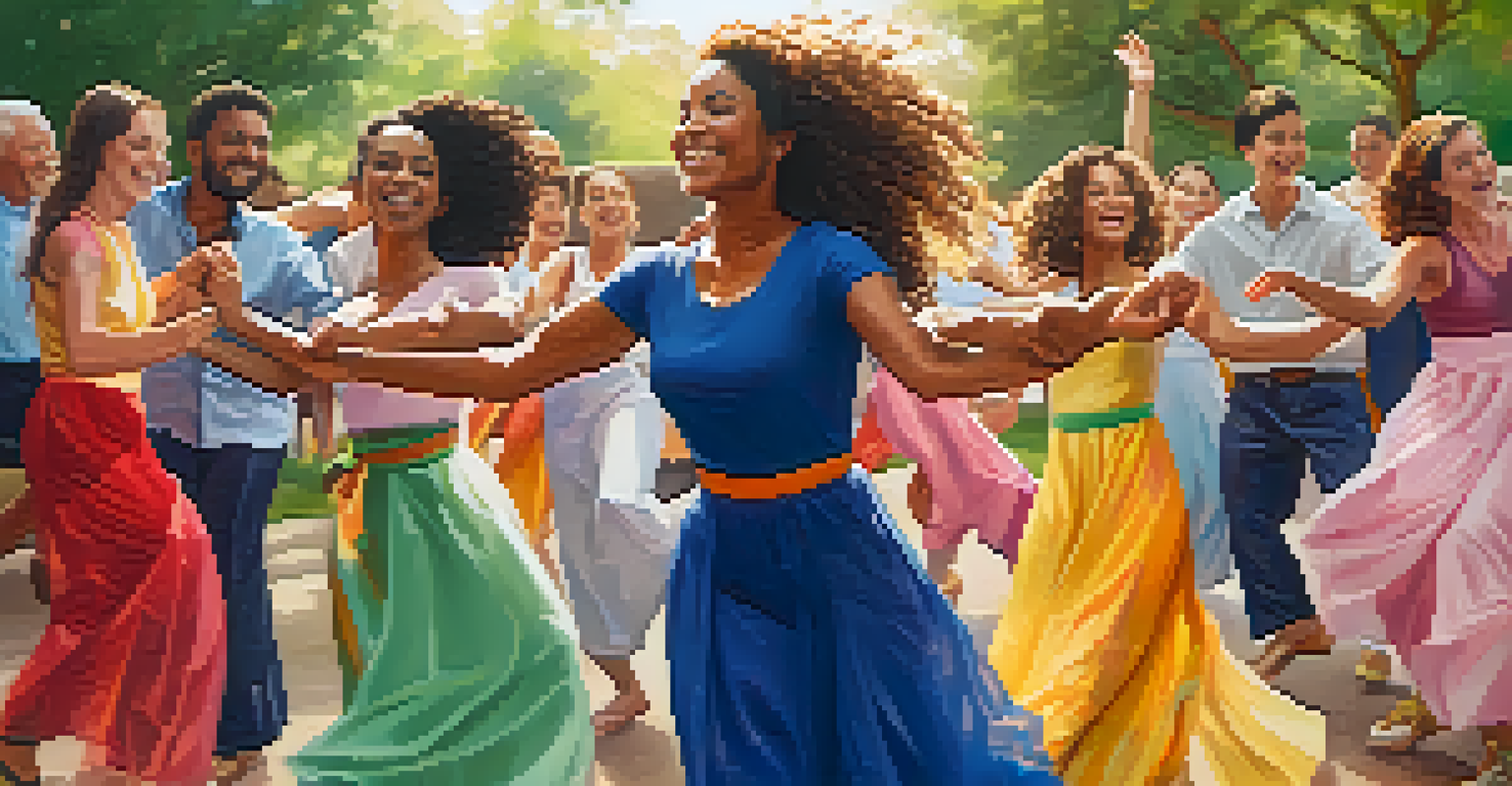Dance Therapy: A Path to Overcoming Loneliness and Isolation

Understanding Dance Therapy and Its Benefits
Dance therapy is a form of expressive therapy that uses movement to promote emotional, cognitive, and social integration. It encourages individuals to express themselves through dance, helping to release pent-up emotions and foster a sense of connection. This therapeutic approach is particularly beneficial for those struggling with feelings of loneliness and isolation, as it creates a supportive environment for self-expression.
Dance is the hidden language of the soul.
Unlike traditional talk therapy, dance therapy taps into the body’s innate ability to communicate feelings and experiences. Participants engage in movement that reflects their thoughts and emotions, which can lead to profound insights and healing. By using the body as a medium of expression, individuals often find it easier to articulate feelings that might be difficult to put into words.
Moreover, dance therapy can help strengthen social bonds among participants. Group sessions encourage collaboration and shared experiences, which can significantly reduce feelings of isolation. As individuals connect through movement, they often discover a sense of belonging and community that is vital for mental well-being.
The Science Behind Movement and Emotion
Research has shown that movement can have a profound impact on our emotional state. When we dance, our brain releases endorphins, neurotransmitters that promote feelings of happiness and reduce stress. This chemical reaction is similar to what you might feel after a good workout, making dance a powerful tool for improving mood and combating feelings of loneliness.

Furthermore, the act of dancing can enhance self-esteem and body image. Many people who experience isolation often struggle with self-acceptance. Through dance therapy, individuals are encouraged to embrace their bodies and celebrate their unique movements, which can lead to increased confidence and a more positive self-view.
Dance Therapy Fosters Connection
Dance therapy creates a supportive environment that encourages individuals to express themselves and build social bonds, reducing feelings of loneliness.
In addition, dance therapy has been linked to improved cognitive function. Engaging in rhythmic movement can enhance memory and concentration, helping participants feel more connected to their surroundings and less isolated. This cognitive boost can be particularly beneficial for those who feel overwhelmed by negative thoughts.
Addressing Loneliness Through Group Dynamics
One of the most powerful aspects of dance therapy is its ability to foster connections among participants. In group settings, individuals can share their experiences and feelings through movement, creating a sense of unity. This collective experience helps participants realize they are not alone in their struggles, which is a crucial step toward overcoming loneliness.
Movement is a medicine for creating change in a person's physical, emotional, and mental states.
The shared vulnerability in dance therapy sessions can break down barriers that often isolate individuals. As participants move together, they develop trust and empathy, leading to deeper connections. These relationships can provide a support network that extends beyond the therapy sessions, helping individuals feel less isolated in their daily lives.
Moreover, dance therapy can help build social skills that are often impacted by loneliness. Participants learn to communicate non-verbally through movement, which can enhance their ability to connect with others. By practicing these skills in a supportive environment, individuals gain confidence to engage with the world around them.
Finding Joy in Movement: A Personal Journey
For many, the journey to overcoming loneliness through dance therapy is deeply personal. Take Sarah, for example, who attended her first session feeling isolated and unsure of herself. Through guided movement and expressive dance, she discovered a newfound sense of joy and freedom, allowing her to reconnect with her body and emotions.
As Sarah continued her dance therapy journey, she found herself opening up to others in the group. The shared laughter and collective movement helped her feel less alone, transforming her experience from one of isolation to one of connection. This personal evolution highlights the power of dance therapy in fostering meaningful relationships.
Movement Enhances Emotional Well-Being
Engaging in dance releases endorphins and improves self-esteem, making it a powerful tool for combating stress and enhancing mood.
Ultimately, Sarah’s story illustrates that dance therapy is not just about movement; it’s about rediscovering oneself and building connections with others. This journey can inspire those struggling with loneliness to take the first step toward healing through movement and community.
Embracing Dance Therapy for Mental Wellness
Integrating dance therapy into one’s routine can be a transformative experience for mental wellness. Many people find that regular movement helps alleviate symptoms of depression and anxiety, which are often closely tied to feelings of loneliness. By committing to dance therapy, individuals can create a healthy outlet for emotional expression and connection.
Additionally, dance therapy can be adapted to suit various needs and abilities. Whether you are a seasoned dancer or someone who has never stepped foot on a dance floor, the beauty of dance therapy is that everyone can participate. It encourages personal expression regardless of skill level, making it accessible to all.
As more people recognize the mental health benefits of dance therapy, the movement continues to grow. Classes and workshops are becoming increasingly available, providing opportunities for individuals to engage in this healing practice. By embracing dance therapy, you can take an active role in your mental well-being while combating feelings of loneliness.
The Role of Facilitators in Dance Therapy
Dance therapy is often led by licensed professionals who understand the intricate connection between movement and emotion. These facilitators create a safe and supportive environment where participants can explore their feelings through dance. Their expertise is crucial in guiding individuals to express themselves fully while ensuring that everyone feels comfortable and respected.
Moreover, facilitators play a key role in tailoring sessions to meet the specific needs of participants. They observe group dynamics and individual responses, adapting activities to foster engagement and connection. This personalized approach helps each participant get the most out of their dance therapy experience, promoting healing and growth.
Facilitators Guide Personal Growth
Licensed professionals tailor dance therapy sessions to individual needs, helping participants unlock their potential and connect with themselves and others.
In addition, the facilitator's guidance can empower participants to take ownership of their journey. By encouraging self-exploration through movement, they help individuals unlock their potential and discover new ways to connect with themselves and others. This empowerment is essential for overcoming feelings of loneliness and isolation.
How to Get Started with Dance Therapy
If you’re interested in exploring dance therapy, the first step is to research local practitioners or community programs. Many organizations offer introductory classes or workshops, allowing you to experience the benefits of dance therapy firsthand. Taking that first step can be both exciting and a little daunting, but remember that everyone is there for the same reason: to connect and heal through movement.
Consider what type of dance therapy resonates with you. Whether it’s structured classes, free-form movement, or a mix of both, find a style that feels comfortable. It’s important to choose a setting where you feel safe and supported, as this will enhance your overall experience.

Lastly, allow yourself to be open to the process. Dance therapy is about exploration and self-discovery, so approach it with curiosity and a willingness to embrace new experiences. By doing so, you’ll not only combat feelings of loneliness but also embark on a journey of personal growth and connection.